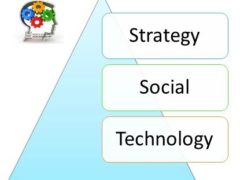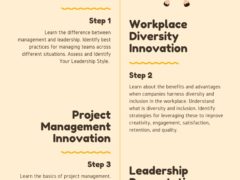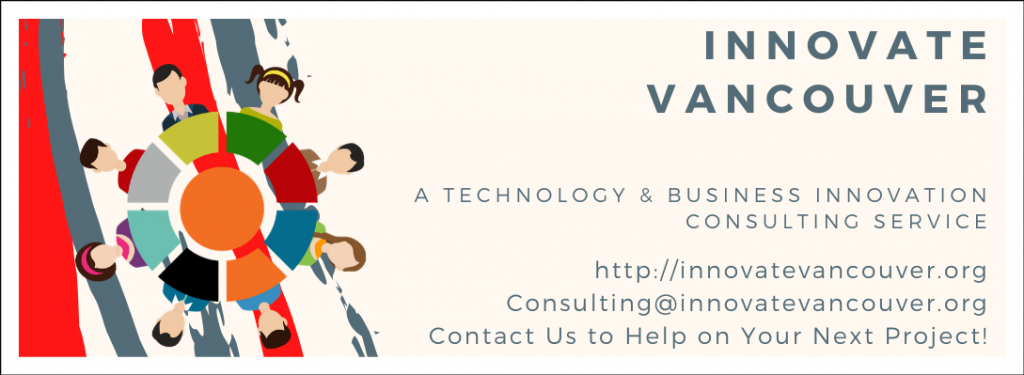Search engine optimization represents a technology and data driven framework for increasing online engagement. As SEO has become more competitive the route to improving engagement has become increasingly elusive. The basics for establishing best practices for search engine optimization are losing ground to paid advertising and sponsored promotional messaging.
SEO Basics
SEO has traditionally fallen into several camps: 
Technology includes website design, information architecture and content layout, as well as sophisticated SEO plugins, services, and databases. Ease of access and navigation becomes a key differentiator at this level.
Social includes social media (facebook, twitter, instagram, snapchat, linkedin personal/business/groups, google+, scoop it!, flickr, etc.) as well as blogging and syndication networks (online magazines and blog sites, medium.com, etc.). Increasing the SEO reach of businesses also includes yelp, yellow pages, professional business sites, and government listings (to name a few). Quality of content and information becomes a key differentiator at this level.
It is at the personal level that most differentiation occurs. While the technology and social components are essentially standardized and copied by most SEO professionals the personal tier is more difficult to duplicate. This begins with an emphasis on the logo and other branding tools but really begins to be creative as the physical customer is engaged. Personal includes word of mouth, social relationships, as well as public events and promotions. This also includes customer service and the physical store’s layout (if exists). Establishing personal connection is a key differentiator at this level.
| Existing | Needed | Improvements | |
| Strategy | |||
| Social | |||
| Technology |
Customer Development Funnel
Ranking within the first page for a keyword used to be the most important benchmark in the SEO experts toolkit. But driving engagement to a website is not enough. In addition to search engine optimization an effective marketing and customer development funnel needs to be established. Basic tools for search engine optimization of the customer development funnel include sign up pages, landing pages, popups, and other ‘conversion’ tools.
Beginning with a focus on content development a social media network needs to be established, the content needs to be promoted, the customer needs to be enticed to visit the website and explore other business product/ service offerings, and a sale is needed if the funnel is to be considered valid. The path between the customer’s first exposure to the business and their future purchase is often labored and lengthy.
| Available Tools | Needed | Improvements | |
| First Contact | |||
| Retain Interest | |||
| Capture Information | |||
| Upsell | |||
| Next Sell | |||
| Cross Sell | |||
| Referrals |
Product/ Service Positioning
Competition begins with exposure to the business product/ service offerings but is often lost in the unlimited messages of competitors. More is needed if customer engagement is to continue. ‘Growth hacking’ has made significant inroads into the online marketing dialogue with an emphasis on continual improvement through analytics and information.
The basic premise of growth hacking is that information sits front and center in the dialogue with customers. Feedback reigns supreme and businesses are well advised to consider customer feedback if the discussion surrounding the business’ product/ service offering is to remain relevant. Unfortunately the pitch of why the product/ service remains relevant is often lost in the dialogue as more salient or emotionally latent content is made available.
| Positioning Criterion | |
| What it is? | |
| What it does? | |
| What it means? | |
| Why I should care? |
Click-bait
The attention span of the customer may not necessarily be getting any shorter but it seems clear that the modern-day models for customer engagement believe it to be true. The online marketer’s first challenge is to get the customer’s attention but this is easy. The next step is considerably more difficult and requires proving to the customer that the business product/ service offering will solve the customer’s problem. That it is essential and relevant.
Engagement may not directly increase sales but it is associated with brand recognition which is arguably priceless. Brands become almost as profitable as the product/ services they promote with online marketing leveraging emotional language, innuendo, and metaphor (often misleading) to ‘hook the customer’s attention.’ These mechanisms are then used to increase customer engagement and pitch more product/ services, many unrelated to the original ‘message.’
Interactive Content
Innovations in online technologies have supported customer engagement with the introduction of cost-effective video development platforms and other interactive content. Learning management systems (and the h5p plugin) have strengthened many business’ ability to engage customers.
The metrics of engagement, retention, content quality, and bounce rate (to name a few) have benefited greatly with these new tools. But as the amount of free content online increases the relevance of these tools towards making a physical sale decreases. These tools take a considerable effort to create and require content developers to build out these resources cautiously.
The Freemium Model
In order to move customer’s further into the ‘customer development funnel’ business have begun to offer free products. These are often downloaded directly from the business website after the customer submits personal information to include name, phone number, email, etc., so that the business can follow-up with more pitches.
The advantages of this model have been built into existing product models to include more functions or services at a fee. The customer acquires the first product for free but is required to buy more functions or services not available in the ‘base model.’ Both free and freemium acquisitions may result with no sales but the intent is to gather more information from the customer and thus have the ability to increase engagement up through the purchase stage.
The Business Model & Keyword Alignment
The challenges facing many of the search engine optimization tools is that the engagement, retention, and acquisition process is often dominated by vanity metrics that are loosely related, it at all, to the point of sale. But to the sale of what?
| Yes | No | Improvements | |
| It’s great if customers are visiting your website but are they actually shopping for a solution? | |||
| If they convert does your business have the tools necessary to support ongoing engagement up through the customer development funnel and the point of sale? | |||
| Is the business model aligned with the customer development funnel? | |||
| Supply chain? | |||
| Marketing? | |||
| Human Resources? | |||
| Revenue models? | |||
| Cost structure? | |||
| Channels? | |||
| Customer relationships? | |||
| Customer segments? |
Strengthening your online SEO becomes pointless if:
- The business/ product service offerings do not solve a recognized problem
- Are considered inferior to competitors, or
- If the business model is unable to anticipate customer demand
Conclusion
In an era of rapidly developing, standardized, and available technology it remains challenging to be ‘heard.’ Search engine optimization emphasizes the technological aspects of the online business model but this may not be enough to differentiate one business from its competitor. More is often required.
The battle for ‘keywords’ in online marketing has created a cacophony of sounds. Differentiating one marketing pitch from another becomes increasingly difficult as all messages begin to sound similar. Businesses are pressured to find new ways to describe their product/ service offering and promote it into the public dialogue.
Innovations in marketing (and search engine optimization) seem to require their own technology development funnel that is built to run interdependently (or along) with the customer development funnel. Taking an innovative approach towards marketing runs an additional risk in that the ‘keywords’ or phrases used to describe the product/ service offering (or value proposition) may be unable to compete with competitor’s more familiar, and standardized, messages.
How is your team promoting their product/ services? What tools are you using? How have you improved on existing models? Share your comments below.
Travis Barker, MPA GCPM
Innovate Vancouver
Innovate Vancouver is a business development & consulting service and technology startup located in Vancouver, BC. Contact Innovate Vancouver to help with your new project. Innovate Vancouver also gives back to the community through business consulting services. Contact us for more details.
.




